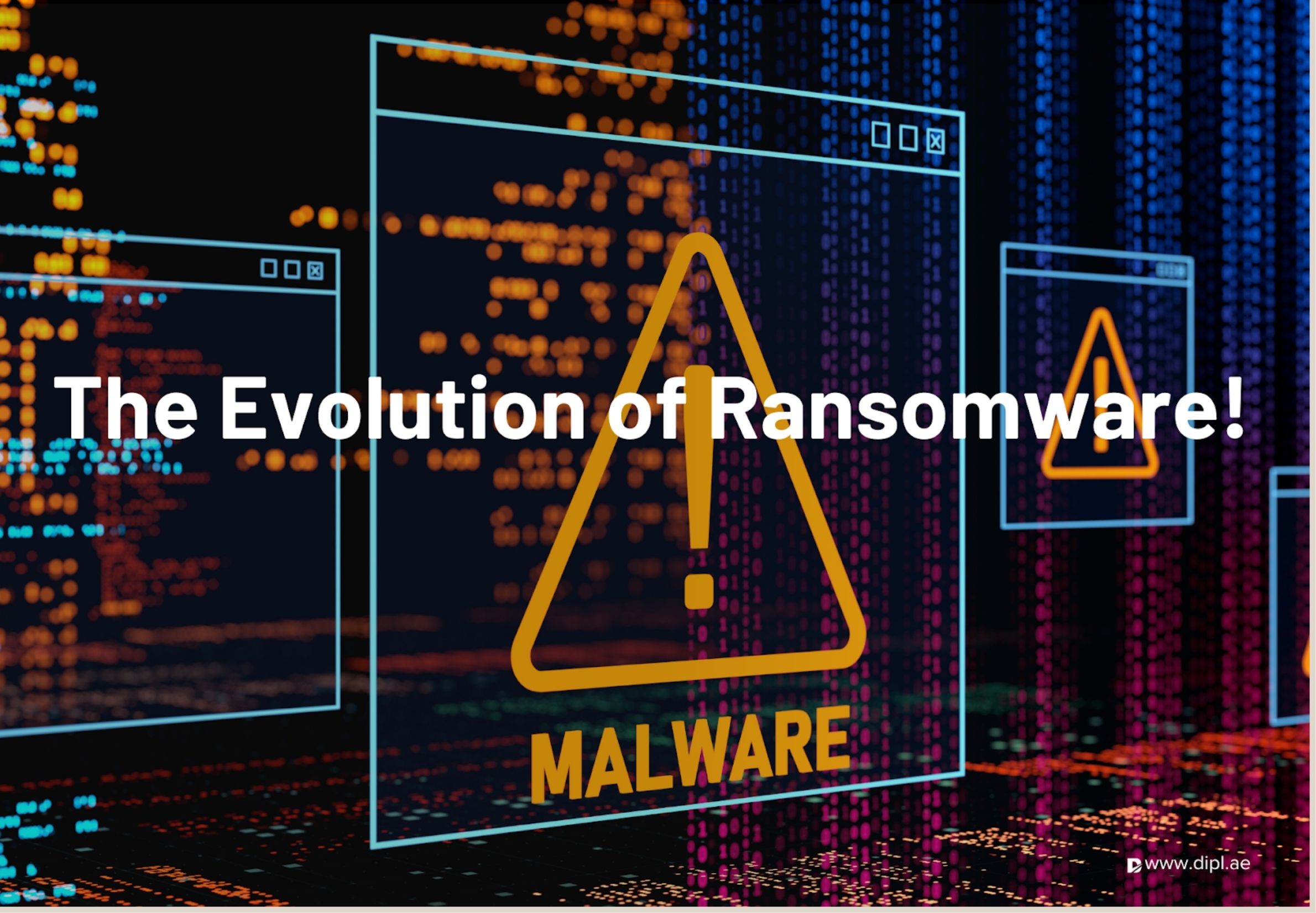The Evolution of Ransomware: How RaaS is Reshaping the Cyber Threat Landscape
Ransomware has evolved from rudimentary malware into an advanced cyber threat, significantly amplified by the emergence of Ransomware-as-a-Service (RaaS) models. This evolution has democratized cybercrime, allowing even those with minimal technical expertise to launch devastating attacks.
This blog explores the progression of ransomware tactics, the rise of RaaS, and recent cases that underscore the changing threat landscape.
The Evolution of Ransomware Tactics
Ransomware’s journey from basic encryption tools to complex, multifaceted threats reflects the adaptability and ingenuity of cybercriminals. Key milestones in this evolution include:
Early Ransomware: Simple Encryption
The initial ransomware attacks were relatively straightforward, involving malware that encrypted a user’s files and demanded a ransom for the decryption key. These attacks were often indiscriminate, targeting individual users and small businesses with limited cybersecurity measures.
Targeted Attacks and Big Game Hunting
As defenses improved, attackers shifted focus to larger organizations—a tactic known as “big game hunting.” By targeting entities with critical data and substantial financial resources, cybercriminals increased their potential payouts.
Sectors such as healthcare, finance, and critical infrastructure became prime targets due to the high value of their data and the potential impact of operational disruptions.
To increase leverage over victims, attackers began employing double extortion tactics. In addition to encrypting data, they exfiltrate sensitive information and threaten to release it publicly if the ransom is not paid.
This approach adds pressure on organizations to comply, as data breaches can result in regulatory penalties and reputational damage. Some groups have escalated to triple extortion, adding distributed denial-of-service (DDoS) attacks to further pressure victims.
Advanced Delivery Mechanisms
Ransomware delivery methods have become more sophisticated, utilizing phishing emails, exploit kits, and vulnerabilities in remote desktop protocols to infiltrate networks. Some ransomware variants possess self-propagating capabilities, enabling them to spread rapidly across networks without human intervention.
The Rise of Ransomware-as-a-Service (RaaS)
The advent of RaaS has revolutionized the cybercrime domain by adopting a business-like model that mirrors legitimate software-as-a-service offerings. In this model, skilled developers create ransomware kits and lease them to affiliates, who then execute attacks. This division of labor allows individuals with minimal technical expertise to launch sophisticated ransomware campaigns.
How RaaS Works
RaaS platforms operate on various revenue models, including:
- Subscription-Based: Affiliates pay a recurring fee for access to ransomware tools and infrastructure.
- One-Time License Fee: A single payment grants indefinite access to the ransomware service.
- Affiliate Programs: Profits from successful attacks are split between the RaaS operators and affiliates, typically with the operator receiving 30-40% of the ransom.
This structure has led to the professionalization of cybercrime, with RaaS operators providing customer support, updates, and even negotiation services to ensure higher success rates for their affiliates.
Notable RaaS Platforms
Several RaaS platforms have gained notoriety for their widespread impact:
- BlackCat (ALPHV): Emerging in November 2021, BlackCat operates on a RaaS model, targeting large organizations and demanding substantial ransoms.
The group has been linked to numerous high-profile attacks, including those on Reddit in 2023 and Change Healthcare in 2024. BlackCat is known for its advanced tactics, including double and triple extortion methods.
- LockBit: First observed in September 2019, LockBit has become one of the most prolific ransomware groups, responsible for approximately 44% of all ransomware incidents globally in early 2023.
The group offers RaaS, allowing affiliates to use their ransomware in exchange for a share of the profits. LockBit’s software is known for its speed and efficiency, making it a preferred choice among cybercriminals.
- Rhysida: A relatively new player, Rhysida has quickly made a name for itself by targeting large organizations and employing RaaS techniques.
Notable attacks include the 2023 British Library cyberattack and the Insomniac Games data dump. The group uses double extortion tactics, encrypting data and threatening to release it publicly unless a ransom is paid.
Recent Cases Highlighting the RaaS Threat
Recent incidents underscore the pervasive and evolving nature of ransomware threats, demonstrating how cybercriminals are leveraging tactics to exploit vulnerabilities across various sectors.
Change Healthcare Ransomware Attack (February 2024)
- The BlackCat ransomware group targeted Change Healthcare, one of the largest healthcare payment processors in the U.S.
- The attack disrupted healthcare payments nationwide, affecting hospitals, pharmacies, and insurance providers.
- The group demanded a multimillion-dollar ransom, leading to significant financial and operational consequences.
Boeing Ransomware Attack (November 2023 – 2024)
- LockBit ransomware group attacked Boeing’s parts and distribution business.
- The attackers stole and leaked sensitive internal data after the company refused to meet ransom demands.
- The breach exposed confidential supply chain information, affecting Boeing’s aircraft production and maintenance.
British Library Cyberattack (October 2023 – 2024)
- The Rhysida ransomware group encrypted British Library systems, leading to prolonged service disruptions.
- The attackers leaked sensitive employee data on the dark web when ransom demands were not met.
- The incident highlighted the vulnerability of public institutions to cyber threats.
Prospect Medical Holdings Ransomware Attack (August 2023 – 2024)
- A major U.S. hospital network was hit by ransomware, affecting patient care and forcing emergency room closures.
- The attack was attributed to the Rhysida ransomware group, which has been active in targeting healthcare institutions.
- The incident underscored the growing threat to critical healthcare infrastructure.
These incidents demonstrate the increasing sophistication of ransomware attacks, particularly those enabled by Ransomware-as-a-Service (RaaS) models. As cyber threats continue to evolve, businesses must stay ahead with robust security measures. To safeguard your organization from ransomware attacks, consult Deccan Infotech today and fortify your cybersecurity defenses.
Defending Against Evolving Ransomware Threats
As ransomware tactics evolve and the RaaS model lowers the entry barrier for cybercriminals, organizations must implement robust cybersecurity strategies to mitigate the risk. Key measures include:
Employee Training and Awareness
Phishing remains a primary vector for ransomware attacks. Regular training sessions should educate employees on identifying phishing attempts and avoiding suspicious links or attachments.
Multi-Factor Authentication (MFA)
Implementing MFA can significantly reduce the risk of unauthorized access, making it more difficult for attackers to exploit compromised credentials.
Regular Backups
Maintaining secure, offline backups of critical data ensures that organizations can restore systems without paying ransoms in case of an attack.
Network Segmentation
Dividing networks into segments limits the spread of ransomware if an initial infection occurs, preventing widespread damage.
Patch Management
Keeping software and operating systems up to date reduces vulnerabilities that ransomware groups frequently exploit.
Incident Response Plan
Organizations should have a well-defined incident response plan that includes steps for containing and mitigating ransomware attacks, as well as a communication strategy for stakeholders.
The Final Thoughts
The rapid advancement of ransomware and the rise of RaaS have transformed cybercrime into a highly organized industry. With ransomware groups constantly refining their tactics, businesses and individuals must adopt proactive security measures to defend against these threats.
By staying informed and implementing strong cybersecurity practices, organizations can reduce their risk and enhance resilience against the ever-growing ransomware menace.
Stay informed, stay secure!

